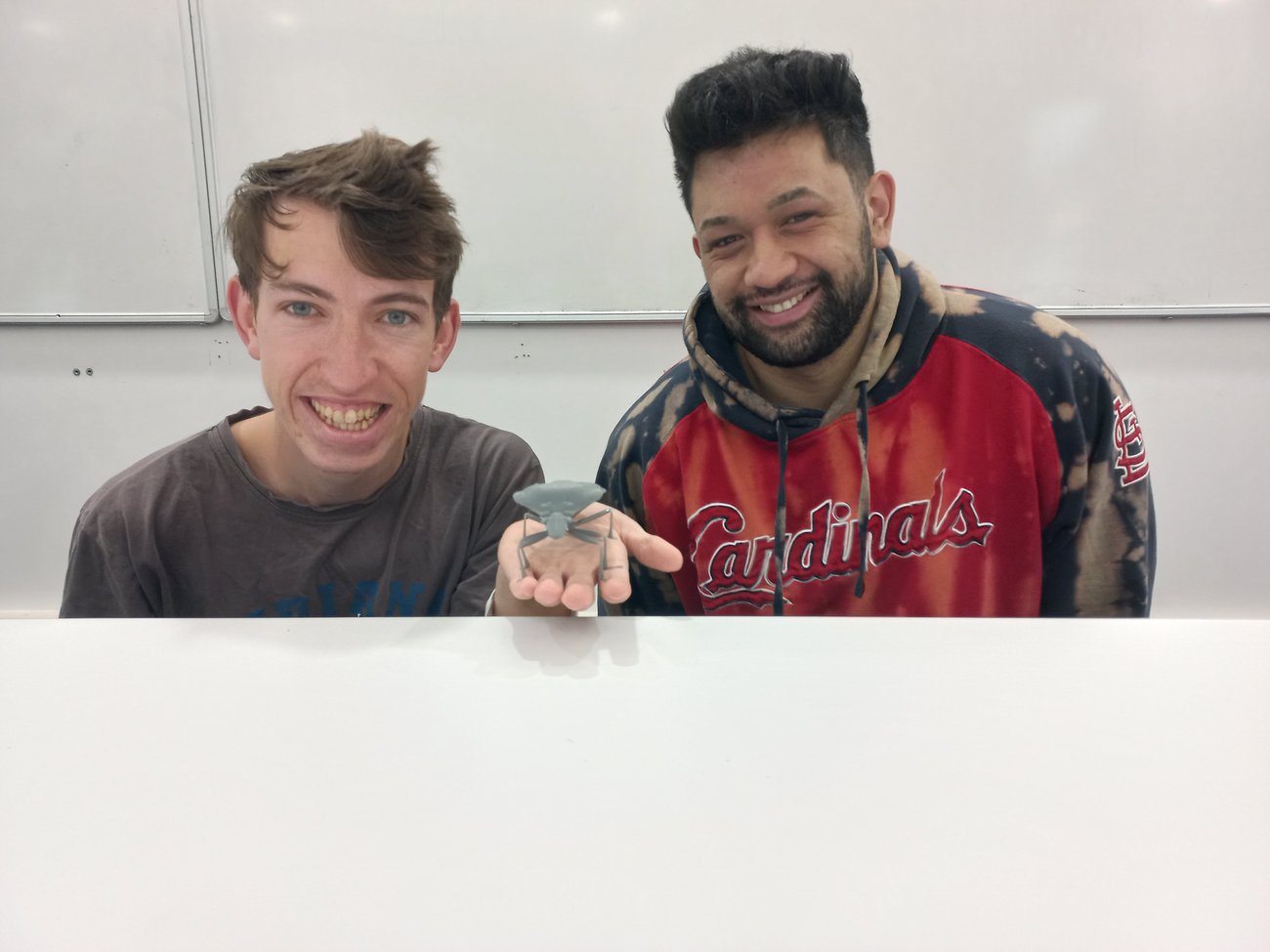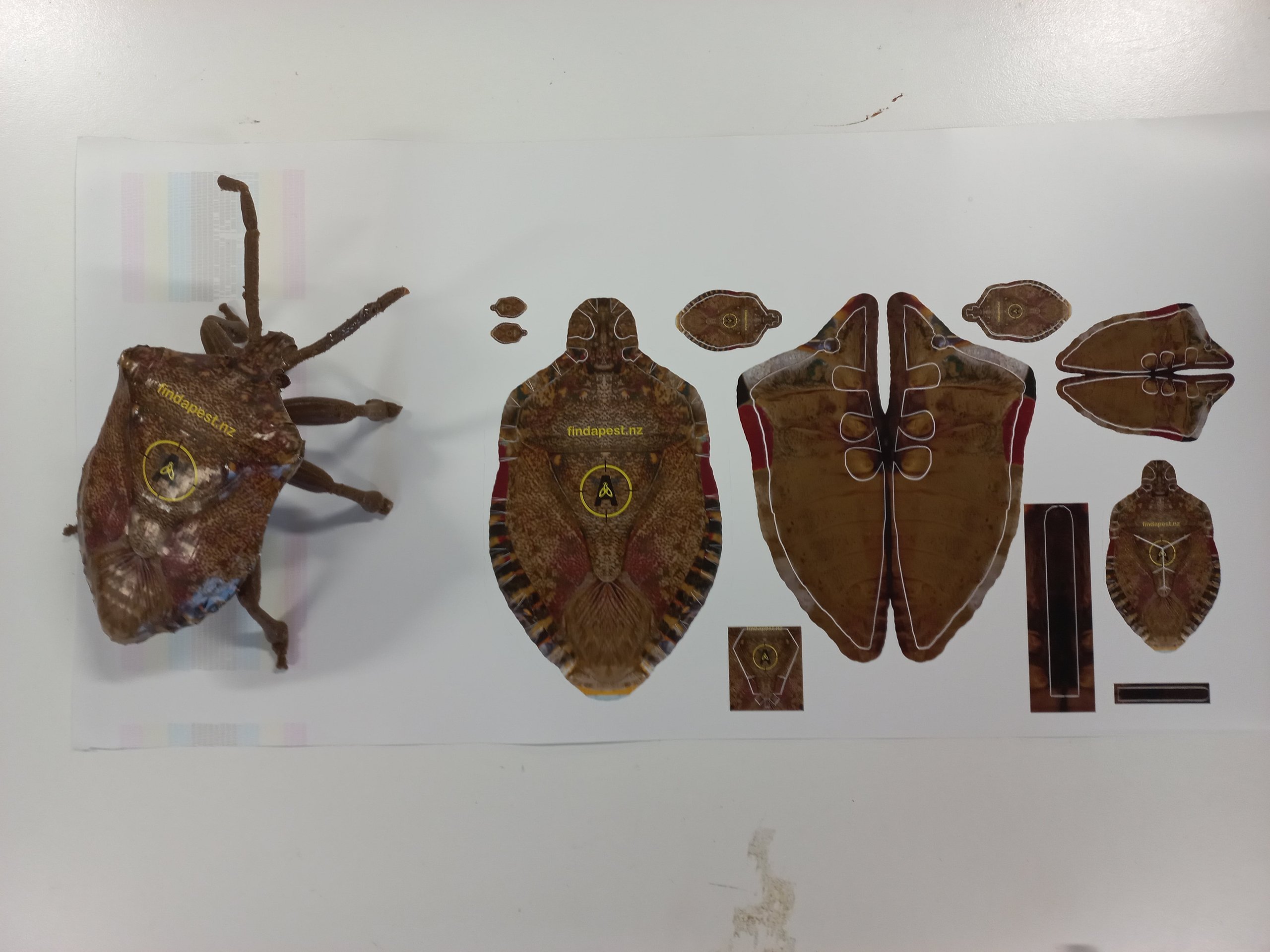
University of Canterbury students have developed a 3D model stink bug to raise awareness on the potential cost the invasion of the pest could have on New Zealand.
Joel Tregurtha and Te Matau O Te Rangi Allen (Te Ati Haunui-a-Pāpārangi, Ngāti Rangi, Ngāti Tūwharetoa) from the University of Canterbury’s School of Product Design created a life-size prototype model, the size of a 10 cent coin of the brown marmorated stink bug.
The project is a part of the Better Border Biosecurity (B3) programme with the aim to strengthen Aotearoa’s biosecurity system and protect the country’s native flora from invasive pests.
David Teulon, B3 Director says the brown marmorated stink bug is a pest that can cause significant economic ramifications if it becomes established in New Zealand.
“It is a particularly difficult pest to eradicate and control, devastating horticulture and causing a nuisance overwintering in homes. As a hitchhiker, the risk of it arriving in New Zealand is high,” he says.
Though the bug is not yet found in Aotearoa, the New Zealand Institute of Economic Research says the impact of an invasion could cause GDP to fall between $1.8 billion and $3.6 billion by 2038.
Read more: Student’s ‘green’ material attracts attention from building industry
Horticulture export value can also drop between $2 billion and $4.2 billion by 2038.
“Sculpting the bug has made me really appreciate the intricate details in the bug’s exoskeleton and realise how incredible it is that they can grow working antennae and legs that are so tiny and thin,” says Tregurtha.

Tregurtha is currently studying towards a Bachelor of Science, majoring in Biological Sciences and was drawn to the project in the interest of finding out more about the bug.
“They are a beautiful bug, despite being a very bad pest,” he adds.
Allen, who is studying towards a Bachelor of Engineering in Mechatronics, was interested in participating in the project because of the practical challenge of bringing the bug to life.
“A part that really interests me is the 3D printing side of this project and being able to use printers that I haven’t had experience on, such as resin printers,” says Allen.
“The biggest challenge is 3D printing small, thin parts, as small 3D prints can make it difficult to show finer detail and cause the print to be very fragile. We also don’t want to make it look too realistic.”
University of Canterbury’s Biosecurity Innovations Director, Dr Stephen Pawson says the project not only helps build biosecurity capabilities in engineering, biology and product design but also encouraging interactions between academics and scientists.
The 3D model of the bug takes approximately 16 hours to print and could be used in the future to be part of a public awareness outreach programme.
In the future, the model could be added to biosecurity trails in Auckland, Wellington and Christchurch’s representative botanical gardens, used in children’s activities and implemented in augmented reality to bring more awareness.




